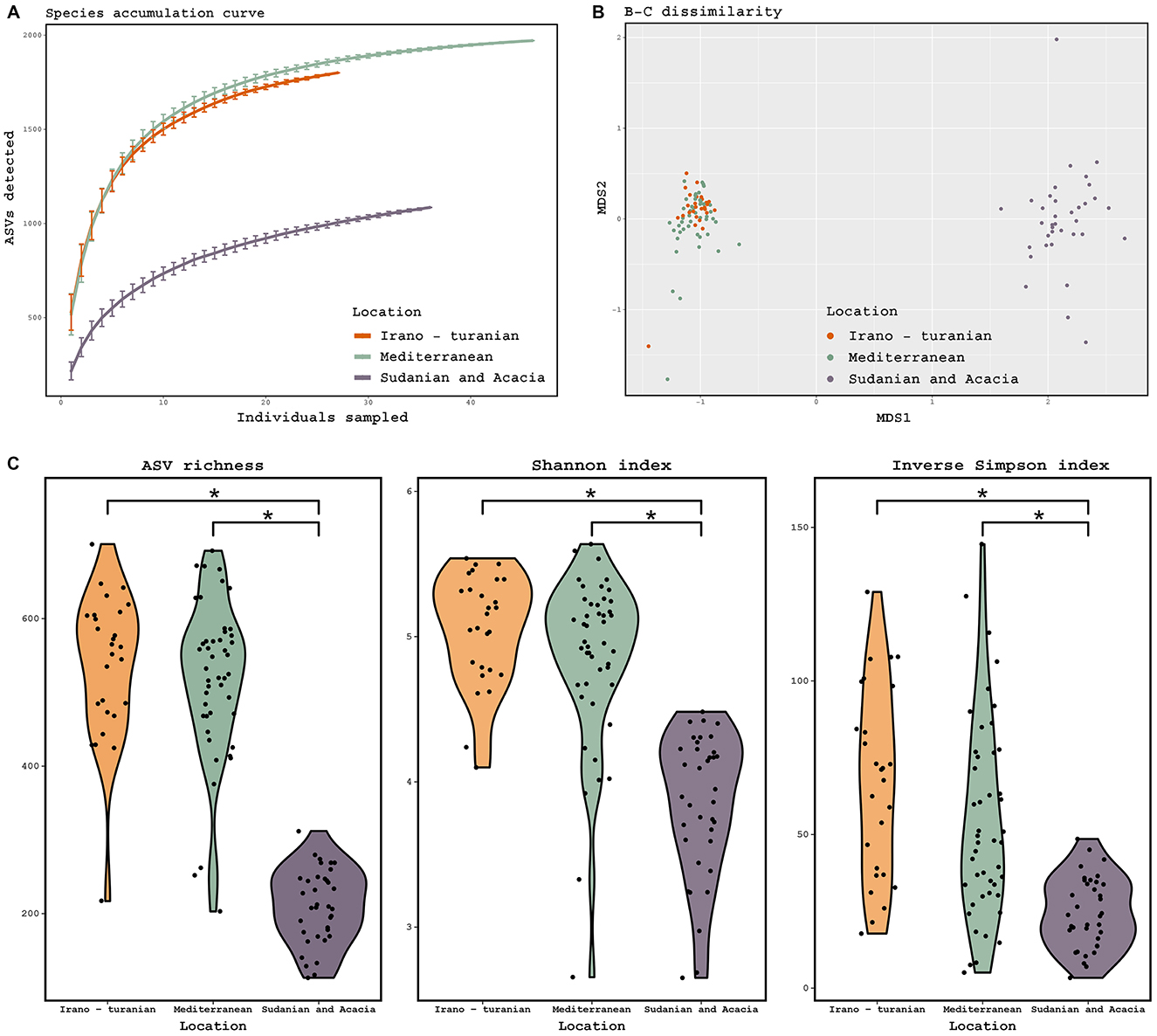- 1Laboratory of Immunology, Department of Medical Laboratory Science, Al-Balqa Applied University, Al-Salt, Jordan
- 2Division of Microbial Ecology, Department of Microbiology and Ecosystem Science, Centre for Microbiology and Environmental Systems Science, University of Vienna, Vienna, Austria
- 3Joint Microbiome Facility of the Medical University of Vienna and the University of Vienna, Vienna, Austria
- 4Division of Clinical Microbiology, Department of Laboratory Medicine, Medical University of Vienna, Vienna, Austria
A Corrigendum on
Microclimate shapes the phylosymbiosis of rodent gut microbiota in Jordan's Great Rift Valley
by Al-khlifeh, E., Khadem, S., Hausmann, B., and Berry, D. (2023). Front. Microbiol. 14:1258775. doi: 10.3389/fmicb.2023.1258775
In the published article, there was an error in Figure 3C as published. “Inverse Simpson Index” plot is a duplication of the “ASV richness” plot. The corrected Figure 3 and its caption appear below.

Figure 3. Diversity of the gut microbiome based on 16S rRNA gene amplicon analysis. (A) Species accumulation curve, determined at the level of ASVs. (B) Principal coordinate analysis ordinations based on Bray–Curtis distances of the gut microbiota of rodents collected from three bioclimatic zone, indicated by different colored dots. (C) Observed ASV richness, Shannon diversity, and inverse Simpson diversity across bioclimate zones. (ANOVA, p = 0.001; Tukey-HSD, p < 0.001). The threshold for significance is p = 0.05. The figure shows a black dot for the mean value and a colored region for the median value.
The authors apologize for this error and state that this does not change the scientific conclusions of the article in any way. The original article has been updated.
Publisher's note
All claims expressed in this article are solely those of the authors and do not necessarily represent those of their affiliated organizations, or those of the publisher, the editors and the reviewers. Any product that may be evaluated in this article, or claim that may be made by its manufacturer, is not guaranteed or endorsed by the publisher.
Keywords: bioclimatic zone, gut microbiota, host phylogeny, microbiome, phylosymbiosis
Citation: Al-khlifeh E, Khadem S, Hausmann B and Berry D (2025) Corrigendum: Microclimate shapes the phylosymbiosis of rodent gut microbiota in Jordan's Great Rift Valley. Front. Microbiol. 16:1639190. doi: 10.3389/fmicb.2025.1639190
Received: 01 June 2025; Accepted: 05 June 2025;
Published: 18 June 2025.
Edited and reviewed by: Franck Carbonero, Washington State University Health Sciences Spokane, United States
Copyright © 2025 Al-khlifeh, Khadem, Hausmann and Berry. This is an open-access article distributed under the terms of the Creative Commons Attribution License (CC BY). The use, distribution or reproduction in other forums is permitted, provided the original author(s) and the copyright owner(s) are credited and that the original publication in this journal is cited, in accordance with accepted academic practice. No use, distribution or reproduction is permitted which does not comply with these terms.
*Correspondence: Enas Al-khlifeh, QWwta2hsaWZlaC5lbkBiYXUuZWR1Lmpv; David Berry, ZGF2aWQuYmVycnlAdW5pdmllLmFjLmF0
 Enas Al-khlifeh
Enas Al-khlifeh Sanaz Khadem
Sanaz Khadem Bela Hausmann
Bela Hausmann David Berry
David Berry